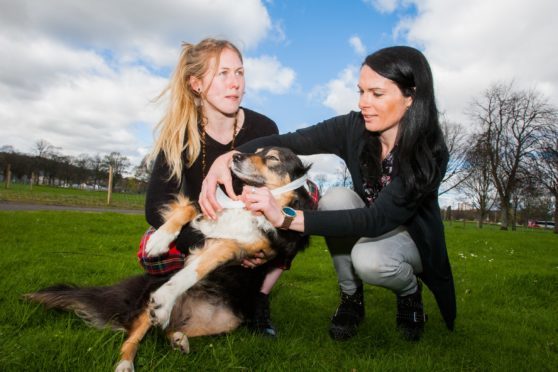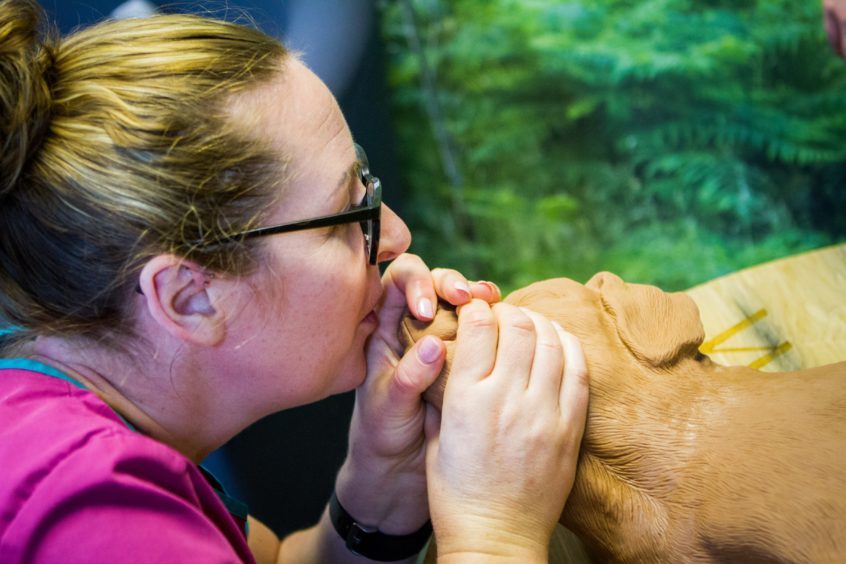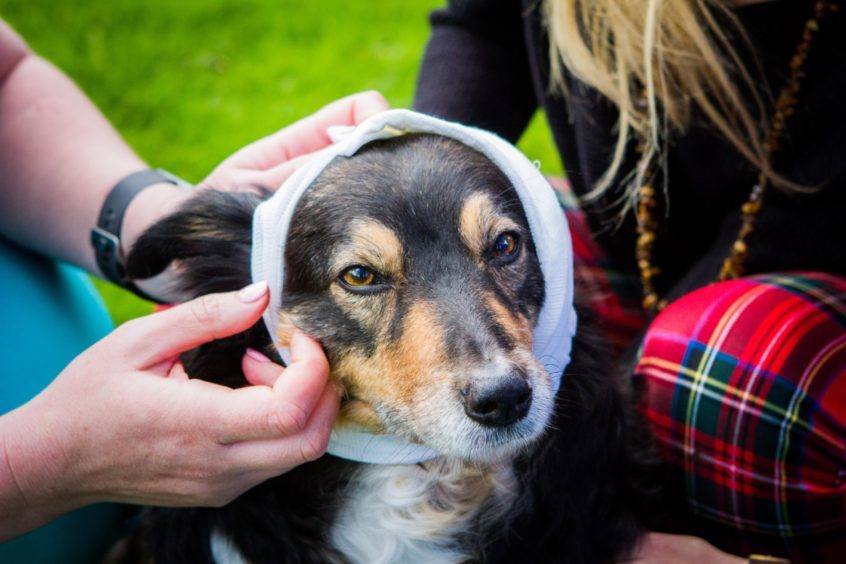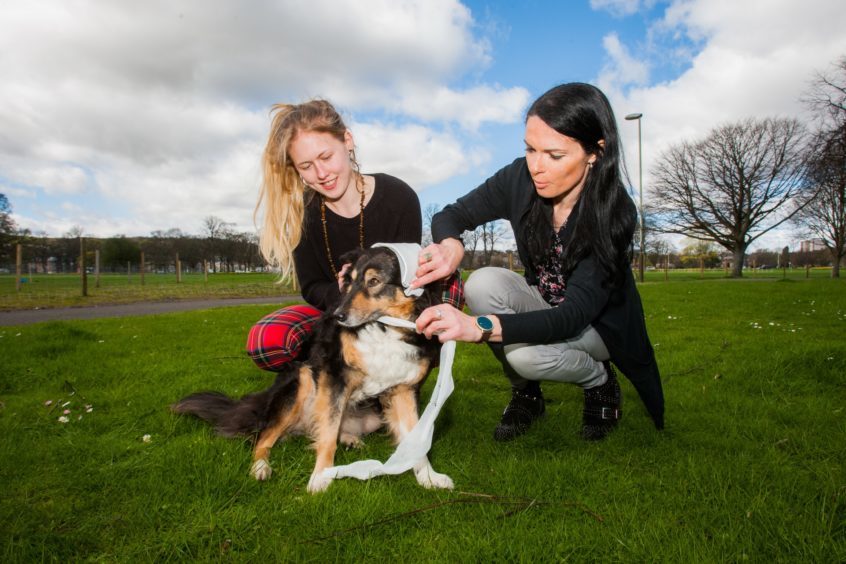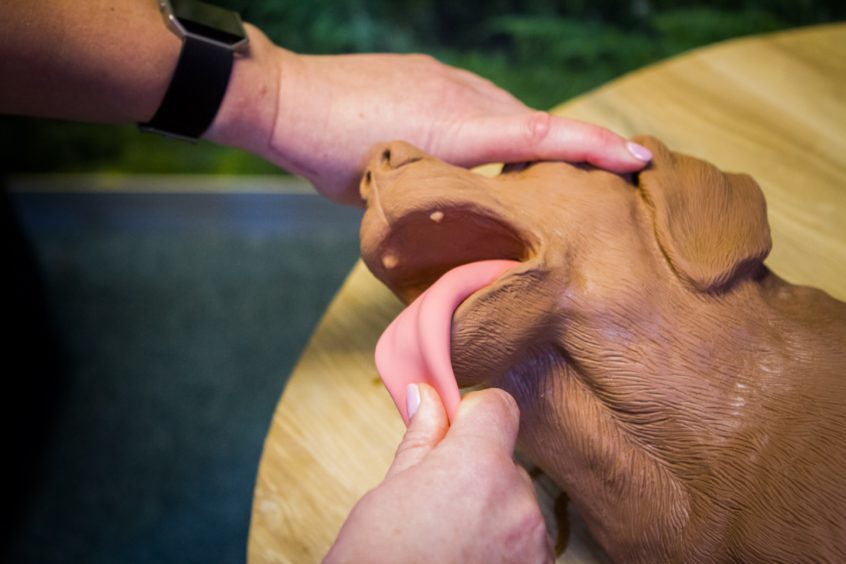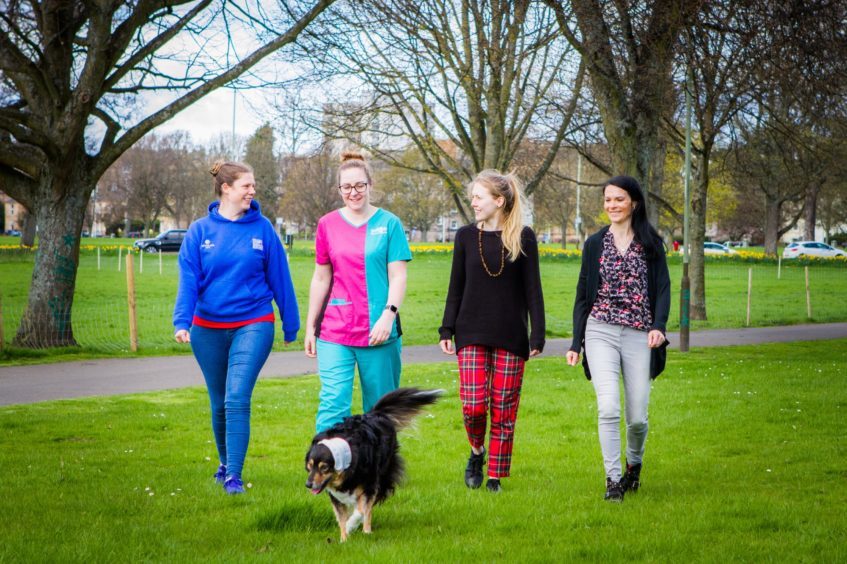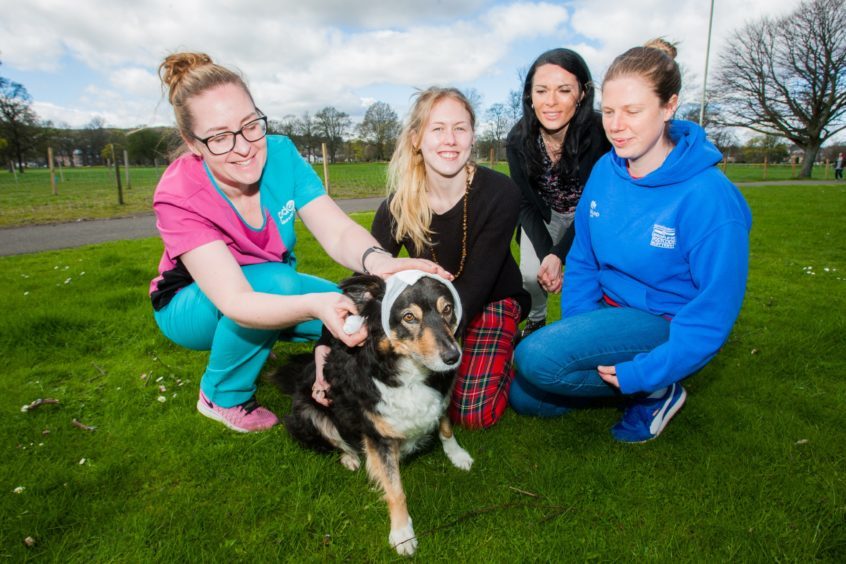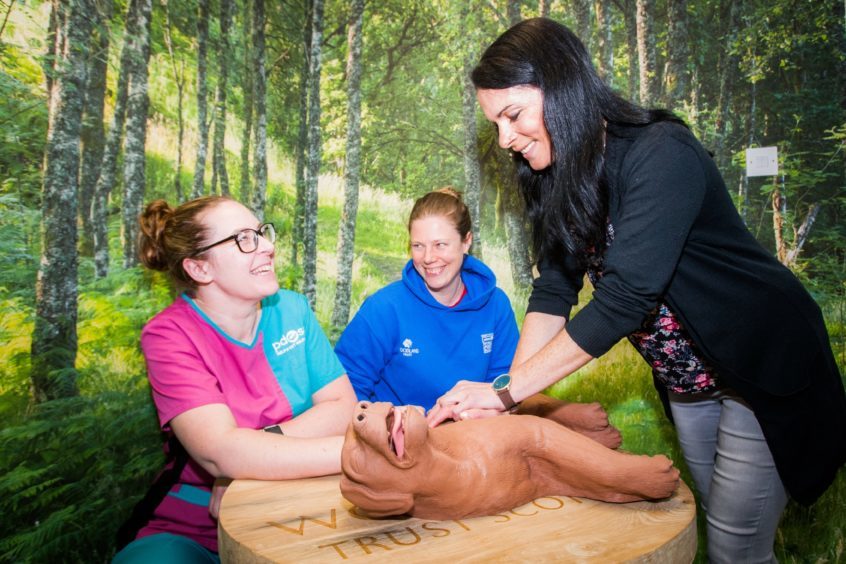Ever given CPR to a dog or bandaged a cat’s ear? Gayle joins an animal first aid course run by the PDSA
As the vet nurse describes in gory detail how a dog’s wagging tail sprayed blood all over the surgery walls, I feel a familiar sense of nausea and light-headedness wash over me.
I’m perspiring profusely and fear a fainting episode may be about to strike.
Fifteen minutes into an animal first aid training course run by the PDSA and I’m a wreck.
I breathe deeply, grab three chocolate biscuits and a strong cup of coffee and sit back down.
As a lover of all animals and proud owner of a black Labrador, I’ve always loved the idea of being a vet. That’s probably never going to happen but it would be good to have a few veterinary skills up my sleeve.
That’s why I’ve joined this fantastic – and free – pet first aid course run by the PDSA and supported by players of the People’s Postcode Lottery.
This particular session takes place at Woodland Trust Scotland’s headquarters in Perth where a group of staff and volunteers are equally passionate about animal health and welfare.
Community and education vet nurse Emma McDonald first talks about recognising “normal” in terms of an animal’s temperature, pulse rate, demeanour, breathing and capillary refill time (how quickly blood returns to gums after pressure is removed).
She then shows us how to find a heart beat, using lovely collie Leo.
“Lay the pet on its right side, pull the elbow back and feel underneath,” she instructs.
We also learn that the best, and strongest, place to find a pulse is in the dog’s groin.
With summer round the corner, heatstroke is another consideration and one which can cause irreversible brain damage and death.
“Over-exercise in the heat, being shut in a car or conservatory with no ventilation, hairy coats…all these things can quickly lead to heatstroke,” says Emma.
“Symptoms are heavy panting, excess drooling, lethargy, lack of co-ordination, vomiting, seizures, collapsing and coma.
“Dogs die in hot cars. If you pass a car with an animal in distress, take a picture and a weather report and call the SSPCA.”
I ask if it’s ok to smash the car window if you’re really worried and of course, Emma can’t comment, but I know what I’d do.
“If your pet is overheating, bring its core temperature down slowly by pouring small amounts of water onto it,” she advises.
“Wet paws, ears and tail, soak towels for it to lie on, and invest in a ‘cool coat’ which you can pick up cheaply.”
Next up is bandaging. If your pet is bleeding, the aim is to get it to stop and keep the wound from becoming contaminated.
“No bandages? Use a sock, tea towel or clothing,” says Emma.
“Remove debris, clean the wound with salt water and apply gentle pressure to stop the bleeding unless it’s a penetrating wound, like a stick, which you should leave alone. If it’s a cut paw pad or tail wound, you can use a tubigrip or a sock.”
For minor cuts, Emma recommends Manuka honey which she calls “magic juice”!
The nicest animal in the world can turn grumpy when in pain, so Emma suggests making a DIY muzzle out of a bandage.
We all have a shot at bandaging Leo’s head and ear and I’m pretty impressed with my attempts, although I’m not sure how Leo feels about it.
The rest of the session takes us through bloat, seizures and poisonings and I’m shocked by the quantity of potentially toxic substances around us, including mould which is hugely toxic.
Videos of dogs and cats having seizures are harrowing to watch but worthwhile.
“They might appear vacant, dazed, unsteady and restless, or they might be having a full-on fitting episode,” says Emma.
“Avoid stimulus, keep the area dark and don’t touch the animal. If it continues for five minutes, call the vet.”
We also learn how to deal with a choking pet, opening the mouth to check for obstruction, pulling its tongue out and tweaking out the offending object with tweezers.
An alternative is to adopt the “wheelbarrow pose”, the equivalent of the Heimlich manoeuvre.
The highlight of the session (for me at least) is learning to how give a dog CPR.
We don’t use Leo for this; instead, Emma brings out a CPR mannequin dog called Casper.
It feels odd but I pull his tongue out and check his pulse which is under his thigh in his groin (and triggered by a classmate with a pump!).
Then I get down to the chest compressions. Placing my hands over the heart, and with my arms held straight out, I push down. The aim is to do this 60 to 80 times a minute.
After 30 compressions, you should give mouth-to-snout by breathing through the nostrils.
The session also covers burns and scalds and buying basic first aid materials.
In a few hours, I’ve learned a wealth of valuable information. Ultimately, knowing what to do in an emergency can be the difference between life and death and I now feel (quite) confident I’ll be of some use if I ever stumble upon a sick or injured animal.
info
The PDSA is the UK’s leading vet charity, providing free and low-cost treatment to pets in need since 1917. It costs more than £1m a week to their work. The pet first aid courses are offered free, supported by the People’s Postcode Lottery. There’s an online quiz at the end of the course; pass and you get a certificate. To book a course, see www.pdsa.org.uk/taking-care-of-your-pet/pet-first-aid-course
